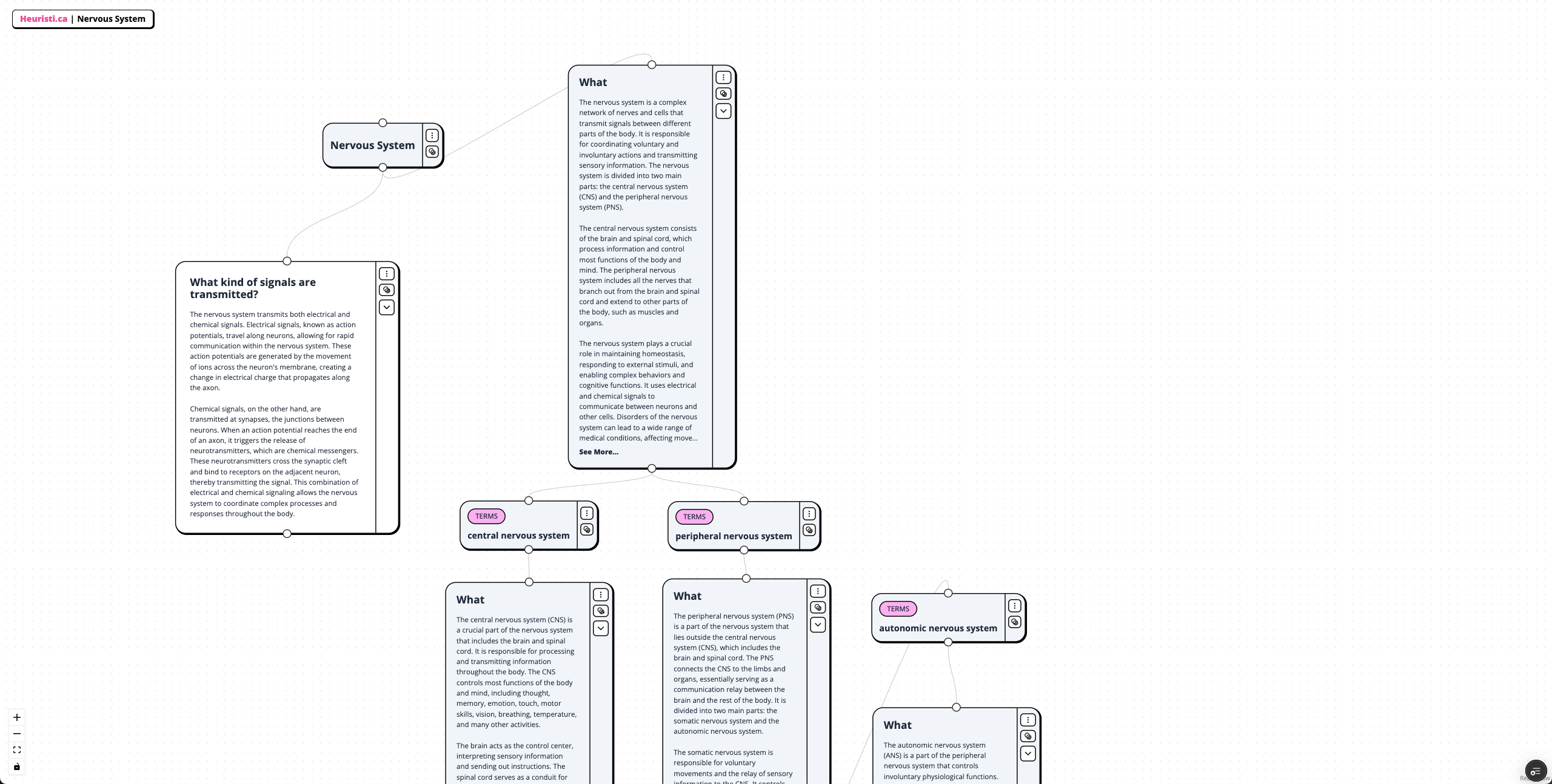Nervous System Concept Map

Key Takeaways
- The CNS consists of the brain and spinal cord, controlling most body functions.
- The PNS connects the CNS to limbs and organs, managing voluntary and involuntary actions.
- Electrical signals (action potentials) travel along neurons for rapid communication.
- Chemical signals are transmitted at synapses through neurotransmitters.
- The somatic nervous system controls voluntary movements via skeletal muscles.
- Reflex arcs involve sensory neurons, interneurons, motor neurons, and effectors for rapid responses.
- Disruption in reflex arc components can compromise reflex actions.
- The autonomic nervous system regulates involuntary functions like heart rate and digestion.
- The ANS includes the sympathetic and parasympathetic systems for balancing responses.
- The "fight or flight" response prepares the body for perceived threats.
- Oxytocin is a hormone crucial for social bonding and reproductive functions.
Additional Concepts
Questions and Answers
What is the nervous system?
What are the two main parts of the nervous system?
What is the central nervous system (CNS)?
What is the peripheral nervous system (PNS)?
What is the somatic nervous system (SNS)?
What are reflex arcs?
What is the autonomic nervous system (ANS)?
Flashcards
What is the nervous system?
The nervous system is a complex network of nerves and cells that transmit signals between different parts of the body, coordinating voluntary and involuntary actions and transmitting sensory information.
What are the two main parts of the nervous system?
The nervous system is divided into the central nervous system (CNS) and the peripheral nervous system (PNS).
What does the central nervous system consist of?
The central nervous system consists of the brain and spinal cord, which process information and control most functions of the body and mind.
What is the role of the peripheral nervous system?
The peripheral nervous system connects the CNS to the limbs and organs, serving as a communication relay between the brain and the rest of the body.
What is the somatic nervous system responsible for?
The somatic nervous system is responsible for voluntary movements and the relay of sensory information to the CNS.
What are reflex arcs?
Reflex arcs are neural pathways that control reflex actions, involving a direct route from sensory neurons to motor neurons, bypassing the brain for quick responses.
What is the autonomic nervous system?
The autonomic nervous system controls involuntary physiological functions such as heart rate, digestion, and respiratory rate, operating without conscious control.
What is the 'fight or flight' response?
The 'fight or flight' response is a physiological reaction to perceived threats, preparing the body to either confront or escape from danger.
What is oxytocin and its role?
Oxytocin is a hormone that plays a significant role in social bonding, childbirth, and breastfeeding, often referred to as the 'love hormone' due to its effects on promoting feelings of connection.
What is the 'tend and befriend' response?
The 'tend and befriend' response is a behavioral pattern observed in stressful situations, particularly among females, involving nurturing activities and forming social networks for mutual support.